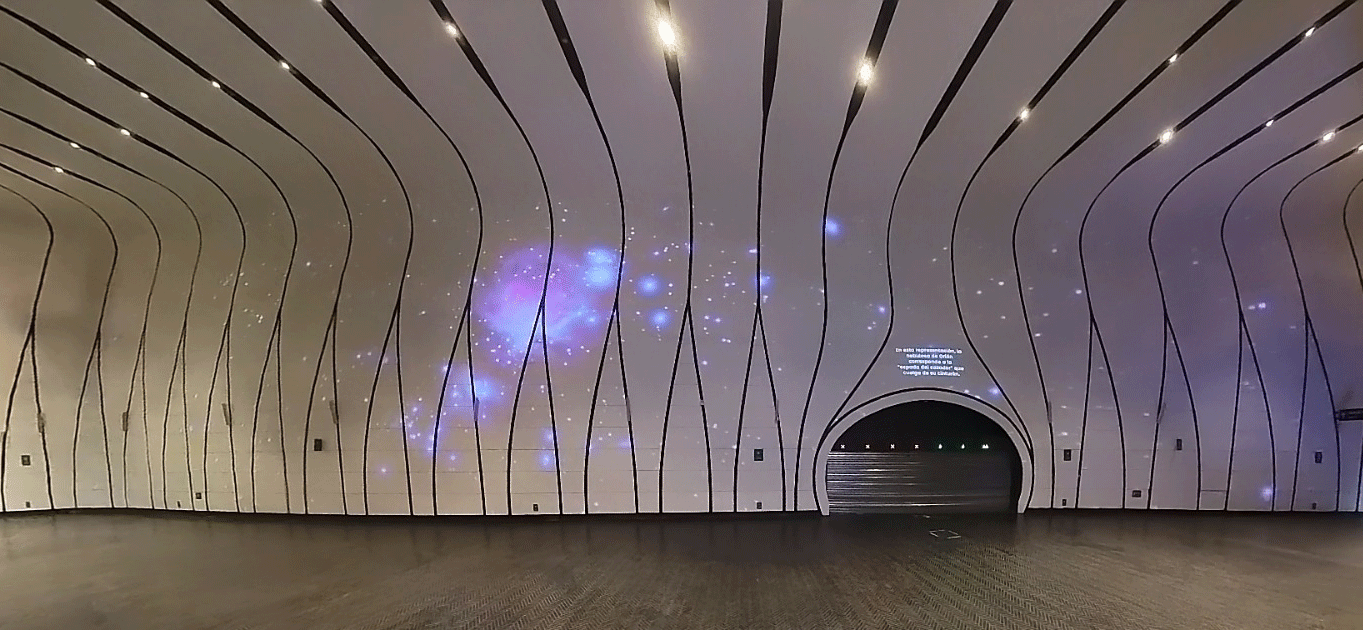[:en]
The investigation which aim is to move forward to the study of the genesis of our Planetary System discovered more than 4000 asteroids after a week of observations. The results are published in the Astronomical Journal.
Asteroids and the Earth have a long-shared story. A clear example of it is that scientists have jumped into the conclusion that after tons of evidence, that about 66 million years ago in the Yucatan Peninsula (Mexico) an object between 10- and 18-kilometers diameter collision against our planet, and that would be one of the main causes of the extinction of dinosaurs. Today, astronomy has discovered something new about these wandering space objects in the Solar System.

“A few times ago, astronomy carried out the most part of the observations in the asteroid belt – a region located between Mars and Jupiter with, literally, tens of thousands of wandering objects – mainly pointing the telescopes at the area with more abundances, which means, the plane of the ecliptic that is the zone where planets orbit around the Sun,” is how José Peña explains, a Ph.D. student in Sciences, mention in Astronomy, FCFM Faculty, Universidad de Chile.
Nevertheless, this research used observations from a different area, faraway from the ecliptic. “We found 5700 asteroids where 4500 were completely new, and most of their dimensions were less than 10 kilometers in diameter,” he states, who also is a researcher in the Center for Excellence in Astrophysics and Associated Technologies CATA and in the Millennium Institute of Astrophysics MAS.
A spatial lab that spins
Science is pleased not only because of their findings but also because of their non-findings; this research is a good example. Peña states that “an ordinary parameter to analyze the composition of the asteroid is color, which measures the difference in brightness of these bodies in different light ranges,” which is something key to measuring precisely to achieve large mapping of celestial bodies to come in next years.
“In this investigation, we learned that to obtain relevant data about objects, we have to do it in different observation intervals within less than a quarter of an hour. This amount of time is not randomly chosen since asteroids spin causing changes in its brightness, affecting its observed color. We have learned that observing in less than 14 minutes the spinning is short enough to non-affect completely the measured color.”

To obtain data, astronomers used the Dark Energy Camera (DECam) by the Blanco Telescope in Cerro Tololo Interamerican Observatory, who took a year and a half to study the data and write the conclusions.
The next step in the investigation is to paying the entire attention to the Asteroids Belt “Now we are focusing on the moons from different planets such as Saturn and Neptune. There is a type of these objects that is believed were asteroids that remained trapped because of the planet (which means, they were independent bodies but, at some point in their history, they passed by the planet, and stayed to orbit around it.) It is expected to see similarities between these moons and other asteroids from the Solar System, giving us hints about the possible origins of these moons, using similar methods to analyze asteroids.
According to César Fuentes, this work “shows how artificial intelligence allows analyzing massive data of any type, recycling the information for different purposes from the original.” He also states that “the benefits of this result will inform the right way that the observatory Vera Rubin (former LSST) should carry out their observations.”
The paper was published under the title “Asteroids’ Size Distribution and Colors from HiTS” in the Astronomical Journal. In this research took part Dr. César Fuentes, astronomer of Universidad de Chile, along with Francisco Förster, researcher of the Center for Mathematical Modeling CMM and an associated researcher of the Millennium Institute of Astrophysics. To read the paper, go to the following link: https://iopscience.iop.org/article/10.3847/1538-3881/ab7338
Main picture: “An artist re-creation of a collision in deep space. Image credit: NASA/JPL-Caltech”
Source: Universidad de Chile
[:es]
La investigación, que tiene dentro de sus objetivos el avanzar hacia el estudio del génesis de nuestro Sistema Planetario, descubrió más de 4000 asteroides tras una semana de observaciones. Los resultados fueron publicados en la revista Astronomical Journal.
Los asteroides y la Tierra tienen una larga historia compartida. Un claro ejemplo de ello es que los científicos han llegado a la conclusión, tras literalmente toneladas de evidencia, que hace aproximadamente unos 66 millones de años, en la zona de la Península de Yucatán (México) un objeto de entre 10 y 18 kilómetros de diámetro impactó nuestro planeta y ello habría sido una de las principales causas de la extinción de los dinosaurios. Hoy la astronomía ha descubierto algo nuevo acerca de estos errantes objetos del Sistema Solar.

“Hasta hace muy poco la astronomía realizaba la mayor parte de las observaciones del cinturón de asteroides – una zona ubicada entre los planetas Marte y Júpiter con literalmente decenas de miles de objetos errantes- fundamentalmente apuntando los telescopios en la zona de mayor abundancia de ellos, es decir, en el plano de la eclíptica que es la franja donde giran los planetas alrededor del Sol“, así lo explica José Peña, estudiante del Doctorado en ciencias mención astronomía FCFM de la Universidad de Chile.
No obstante lo anterior, esta investigación utilizó observaciones hechas en una zona distinta, lejos de la eclíptica. “Encontramos 5700 asteroides donde 4500 eran completamente nuevos y en su mayor parte eran de dimensiones menores a 10 kilómetros de diámetro.”, explica el también investigador del Centro de Excelencia en Astrofísica CATA y del Instituto Milenio de Astrofísica MAS.
Un laboratorio espacial que gira
La ciencia se alegra no sólo por lo que encuentra, sino también por lo que no encuentra; este es un buen ejemplo de lo segundo. Peña explica que “un parámetro típico para analizar la composición de los asteroides es el color, que mide las diferencias de brillo de estos cuerpos en diferentes rangos de luz”, siendo clave que estos sean medidos de forma precisa para lograr los grandes mapeos de objetos celestes que vendrán en los próximos años.
“Lo que aprendimos con esta investigación fue que, para obtener datos relevantes de los objetos, debemos hacerlo con intervalos de observación inferior a un cuarto de hora. Este tiempo no es antojadizo ya que los asteroides giran causando que su brillo cambie, afectando el color observado. Aprendimos que observando en menos de 14 minutos este giro es lo suficientemente pequeño para no dañar por completo el color medido.”

Para recopilar los datos los astrónomos utilizaron la Dark Energy Camera (DECam) del telescopio Blanco del Observatorio Interamericano Cerro Tololo, demorándose un año y medio en ser estudiados antes de redactar el texto con las conclusiones.
El próximo paso en la investigación será sacar el foco del Cinturón de Asteroide “Ahora nos enfocaremos hacia las lunas de diferentes planetas como son Saturno y Neptuno. Hay un tipo de estos objetos que se cree eran asteroides que quedaron atrapados por el planeta (es decir, eran cuerpos independientes, pero en algún momento de su historia pasaron cerca del planeta tal que quedaron girando alrededor de él). Con métodos parecidos a los utilizados al analizar los asteroides se espera ver semejanzas entre estas lunas y otros asteroides del Sistema Solar, dándonos pistas del posible origen de estas lunas.
Según César Fuentes, este trabajo “demuestra cómo la inteligencia artificial permite analizar datos masivos de todo tipo, reciclándoles con fines distintos a los originales”. Además señala que “la utilidad de este resultado informará la forma en que el observatorio Vera Rubin (ex-LSST) deberá observar”.
El artículo científico fue publicado bajo el título “Asteroids’ Size Distribution and Colors from HiTS” (“Distribución de Tamaños y Colores de Asteroides de HiTS”) de la revista Astronomical Journal, y en él también participaron el Doctor César Fuentes, astrónomo de la Universidad de Chile y junto a Francisco Förster, investigador del Centro de Modelamiento Matemático e investigador asociado del Instituto Milenio de Astrofísica. Para ver la publicación revisa la siguiente dirección web https://iopscience.iop.org/article/10.3847/1538-3881/ab7338
Foto principal: “An artist re-creation of a collision in deep space. Image credit: NASA/JPL-Caltech”
Fuente: Universidad de Chile
[:]












